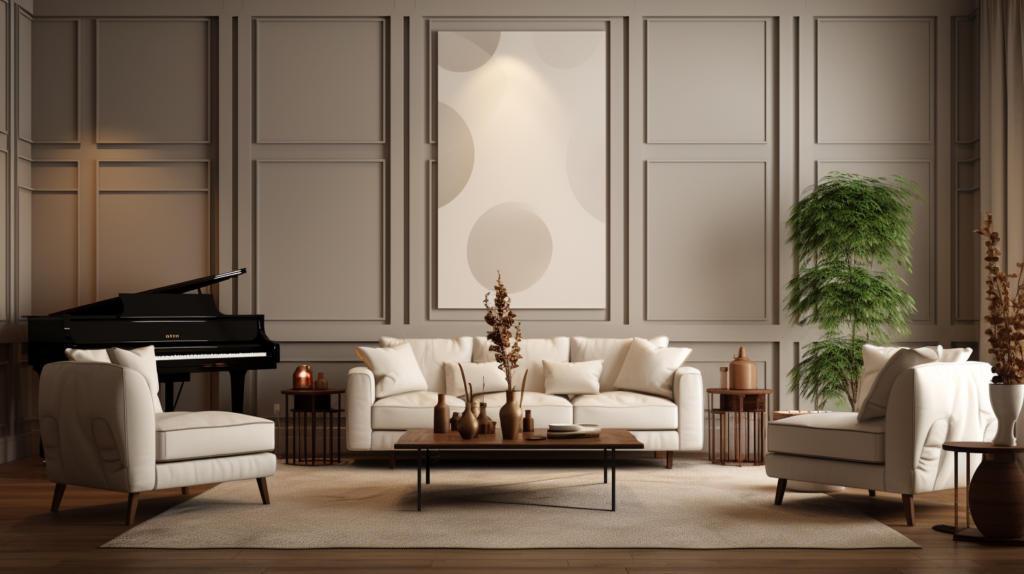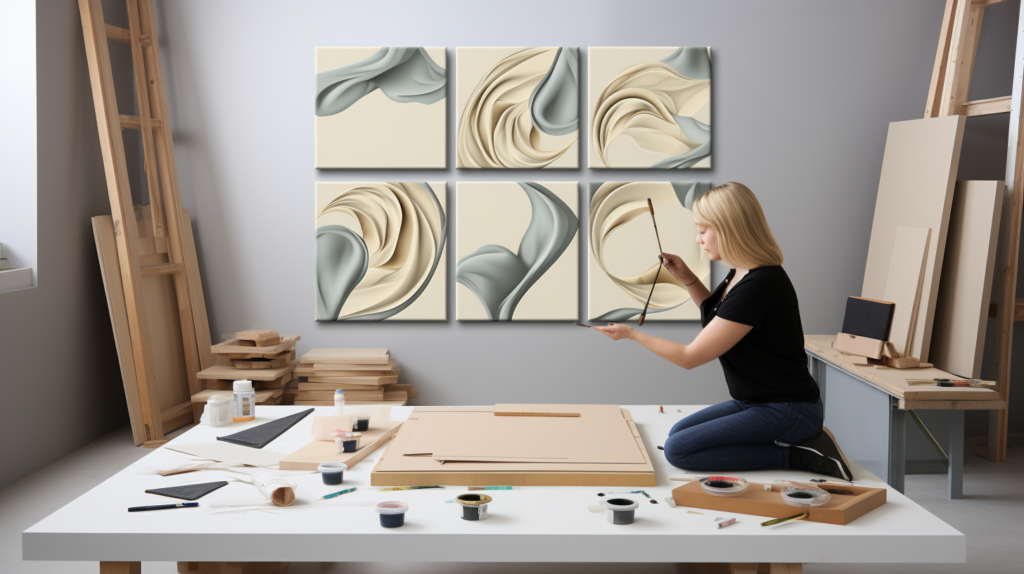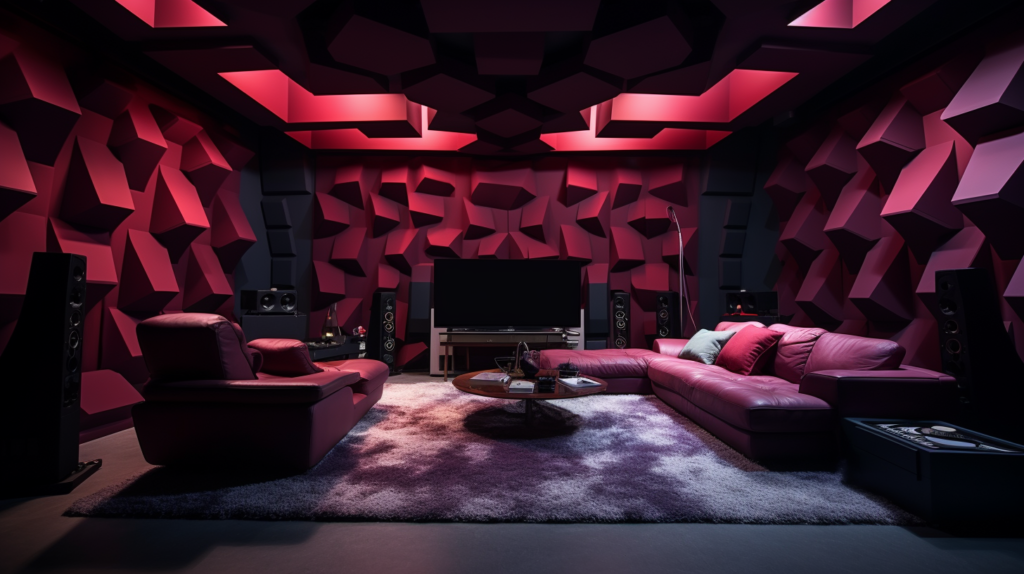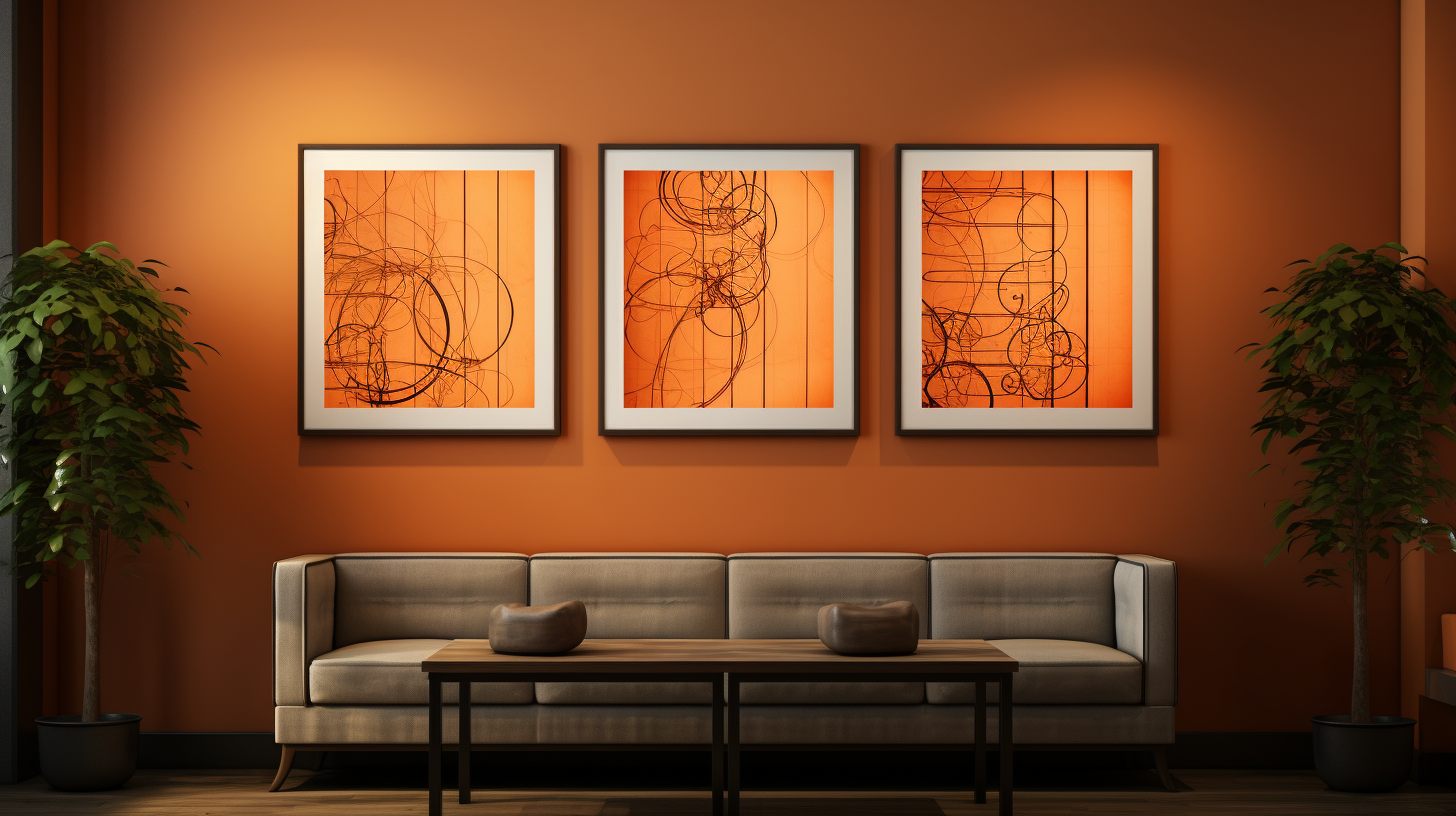Have you ever walked into a room and felt overwhelmed by the echo, or perhaps, struck by its visual emptiness?
What if there was a way to solve both problems with a single solution—a material that could both captivate your eyes and comfort your ears?
Canvas, traditionally the darling of artists and interior designers, is stepping onto a new stage: acoustic treatment.
This versatile material is known for its aesthetic appeal in art and decor, but can it double as an effective acoustic panel?
We’ll explore canvas’s potential in acoustic treatment and compare it to traditional materials like foam and polyester acoustic panels. Ready to unravel the mystery?
Let’s dive in.
The Role of Canvas in Art and Interiors

Canvas has long been the go-to material for artists around the world. The fabric serves as a sturdy yet flexible base for oil and acrylic paintings.
In the realm of interior design, canvas also enjoys a respectable position. It’s used in wall hangings, as upholstery material, and even as room dividers.
The beauty of canvas lies in its versatility. Interior designers love the texture it brings to room aesthetics. Artists appreciate how well it holds pigments.
It’s a material that lends itself to both functional and aesthetic purposes. Because of these qualities, people often explore other uses for canvas.
One such exploration is its potential role in acoustic treatment.
Can Canvas Be an Effective Acoustic Panel?

The concept of acoustic treatment is not new. For years, people have been seeking ways to optimize sound within a space.
Whether it’s a home theater, a recording studio, or an office, the need for good acoustics is universal. This leads us to question: can canvas serve as an effective material for acoustic panels?
Canvas possesses some interesting characteristics that make it worth considering for acoustic applications.
First, it’s a porous material. Sound waves need to be either absorbed or diffused to prevent echo and improve acoustics.
Porosity in materials often aids in this process. Second, canvas is lightweight. This makes it easier to install and manage, compared to more dense materials.
However, canvas alone may not be the ultimate solution for acoustic treatment.
While it has traits that could theoretically help in sound absorption, it’s not specifically engineered for this purpose.
Unlike other materials that are designed for acoustics, canvas is a bit of a wild card.
Its effectiveness can vary based on several factors, such as the room’s existing acoustics, the canvas’s thickness, and its overall quality.
The Science Behind Acoustic Materials

Before we delve deeper into the efficacy of canvas as an acoustic panel, understanding the basics of acoustic science is essential.
Acoustics is more than just soundproofing; it’s the broader science of sound.
This includes how sound is produced, transmitted, and received. Acoustic treatment, specifically, aims to control sound waves through absorption, diffusion, and reflection.
Materials used in acoustic panels are generally porous and dense. Porosity allows the sound waves to enter the material, reducing reverberation.
Density is equally crucial. A denser material will absorb more sound, providing a quieter atmosphere.
The combination of these two factors determines how effective an acoustic panel will be.
Comparative Analysis: Canvas vs. Traditional Acoustic Materials

When it comes to acoustic treatment, traditional materials like foam and polyester acoustic panels have been the standard choices.
These materials are scientifically engineered to provide optimal sound absorption. Foam panels are lightweight and can easily be installed on walls and ceilings.
Polyester acoustic panels are versatile and come in various forms, including boards, tiles, and even decorative shapes.
In terms of sound absorption, both foam and polyester acoustic panels perform remarkably well. They are designed to trap sound waves efficiently, reducing echo and background noise.
This makes them ideal for settings like recording studios, where sound quality is paramount.
Canvas, while not traditionally used for acoustic treatment, brings its own set of advantages and disadvantages to the table.
One significant advantage is its aesthetic appeal. Canvas can be custom-printed with any design or artwork, allowing for a highly personalized look.
This makes it an excellent choice for spaces where aesthetics are as important as sound quality.
However, canvas falls short in terms of sound absorption compared to foam and polyester acoustic panels.
While it can absorb some sound due to its porous nature, it’s not as efficient as materials specifically designed for acoustics.
In most cases, canvas would need to be backed with another material, like foam or polyester, to improve its acoustic properties
DIY Canvas Acoustic Panels: A Step-by-Step Guide

Given the aesthetic advantages of canvas, many people are intrigued by the idea of DIY canvas acoustic panels. The process is surprisingly straightforward.
Start by selecting a high-quality canvas material. The quality of the canvas can significantly affect the overall effectiveness of your acoustic panel.
It’s advisable to go for a medium to heavy-weight canvas for better sound absorption.
Next, you’ll need a wooden frame. You can either build one yourself or purchase a pre-made frame. Stretch the canvas over the wooden frame and secure it tightly.
This is crucial as a loose canvas will not be effective in trapping sound waves. Once the canvas is stretched and stapled in place, the real work begins.
For the acoustic layer, you can opt for traditional materials like foam or polyester acoustic panels. Cut the material to size and place it behind the canvas.
Secure it in place using staples or adhesive. This layer will serve as the primary sound absorber, while the canvas acts as a decorative front.
To ensure that your DIY canvas acoustic panel works effectively, testing is key. Place the panel in the room where you plan to use it and observe the changes in sound quality.
If the panel doesn’t perform as expected, consider adding more layers of acoustic material. The idea is to strike a balance between aesthetics and functionality.
Pros and Cons of Using Canvas as an Acoustic Panel

Choosing the right material for acoustic treatment is a crucial decision. Each material has its own set of advantages and disadvantages.
Canvas is no exception. The most significant advantage of using canvas is its aesthetic versatility. You can print any design, pattern, or artwork on it, making it a perfect fit for any room decor.
On the flip side, canvas isn’t specifically designed for acoustic treatment. It lacks the density and porous structure that specialized acoustic materials possess.
This means that while canvas may offer some level of sound absorption, it’s not as effective as traditional materials like foam or polyester acoustic panels.
Another downside to consider is the cost. High-quality canvas material can be relatively expensive.
When you add in the cost of the additional acoustic materials needed to back the canvas, the overall price can add up. However, for those who prioritize aesthetics, this extra cost may be justifiable.
Case Studies: Real-World Examples of Canvas Acoustic Panels

To better understand the practicality of using canvas as an acoustic panel, looking at real-world examples can be enlightening.
Various businesses, particularly in the art and design sectors, have experimented with canvas acoustic panels.
In these settings, the dual function of canvas—as both an art medium and a potential acoustic treatment—has been explored.
One notable example is an art gallery that used canvas acoustic panels as part of an exhibit. The panels featured artwork by local artists and were backed with foam to improve acoustics.
This created an environment where both the visual and auditory experiences were enhanced.
However, it’s worth mentioning that the canvas panels were most effective when used in conjunction with traditional acoustic treatments, such as polyester acoustic panels.
In another case, a design studio opted for canvas panels in their meeting rooms. These panels were custom-designed to match the studio’s aesthetic.
The result was a visually pleasing space with improved acoustics, although again, the canvas was backed with other acoustic materials to ensure effectiveness.
Alternatives To Canvas Acoustic Panels

While canvas offers a unique blend of aesthetic and potential acoustic benefits, it’s not the only material worth considering.
When it comes to pure sound absorption capabilities, other materials like polyester acoustic panels stand out as strong alternatives.
Polyester acoustic panels offer excellent sound absorption qualities. These panels are made from high-density polyester fibers, which are effective at trapping and diffusing sound waves.
They are often used in professional settings like recording studios, cinemas, and offices where superior sound quality is a requirement.
One of the greatest advantages of polyester acoustic panels is their versatility. They come in various shapes and sizes, allowing for creative installation options.
Whether you want to install them on walls, ceilings, or even as free-standing partitions, the possibilities are endless.
Moreover, polyester acoustic panels are environmentally friendly. They are often made from recycled materials and are fully recyclable themselves.
This adds another layer of appeal for those looking to make an eco-friendly choice.
Another noteworthy benefit is their durability. Unlike foam, which can deteriorate over time, polyester panels are known for their long-lasting properties.
This makes them a cost-effective solution in the long run, as they don’t require frequent replacement.
In terms of aesthetics, while polyester panels may not offer the same level of artistic freedom as canvas, they are far from dull.
Many manufacturers provide options for printed or colored panels, giving you some degree of customization.
In summary, if you are looking for a material that combines excellent acoustic properties with durability and environmental benefits, polyester acoustic panels are worth considering.
They might not offer the same artistic freedom as canvas, but they excel in functional aspects, making them a reliable alternative for acoustic treatment.
Conclusion
Choosing the right material for acoustic treatment involves a mix of aesthetics and functionality.
While canvas offers artistic freedom, its acoustic performance may require backing from specialized materials like foam or polyester acoustic panels.
On the flip side, traditional materials like polyester offer proven effectiveness but less artistic versatility. Your ideal choice will depend on what you prioritize: aesthetics, performance, or a blend of both.
In the world of acoustic treatment, there’s a solution for every need, and your choice will set the tone—literally and figuratively—for your space.
